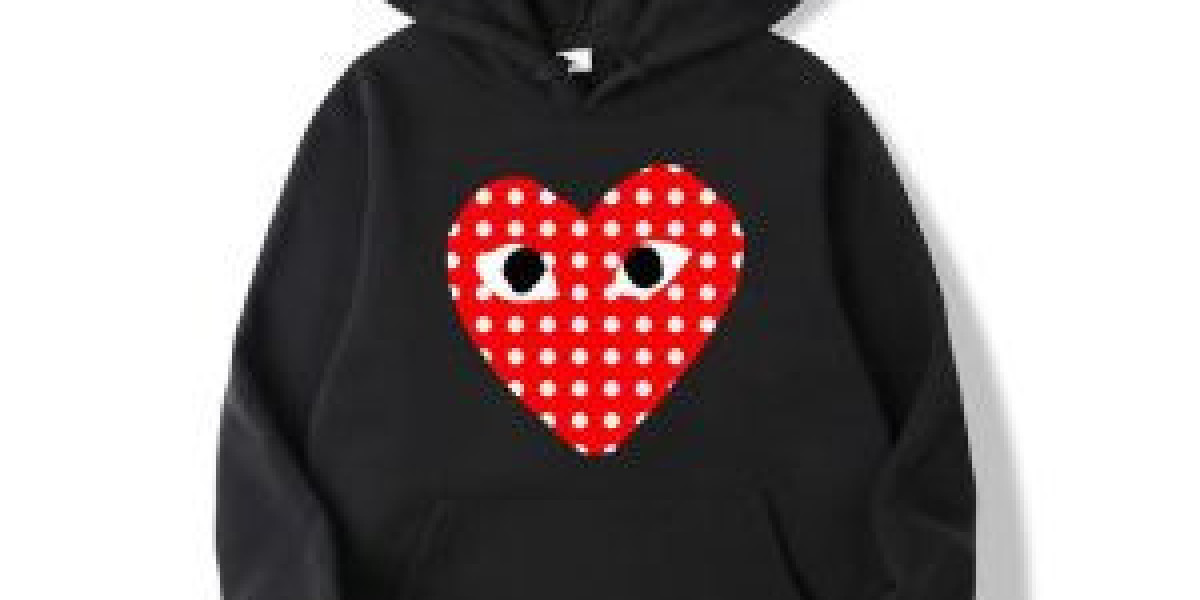Comme des Garçons, founded by Rei Kawakubo in 1969, began as a radical force in Tokyo’s fashion scene. Its name, meaning “like boys” in French, perfectly reflects the brand’s philosophy of questioning traditional aesthetics and reimagining clothing as a form of artistic rebellion. With its early focus on monochrome palettes, unconventional tailoring, and asymmetry, Comme des Garçons set itself apart from Japan’s mainstream fashion culture. Tokyo became the birthplace of its experimental identity, where fashion and art merged into one narrative.
Kawakubo’s designs were not created to please the masses but to challenge them. The Tokyo audience of the 1970s witnessed clothing that blurred gender norms and played with imperfection. This daring approach gave the brand its cult status in Japan before it expanded globally.
Comme des Garçons’ Global Rise and European Expansion
The 1980s marked a crucial era when Comme des Garçons made its European debut in Paris Fashion Week. The reception was controversial; critics were divided between admiration and confusion. Kawakubo’s “anti-fashion” statements, featuring oversized silhouettes, distressed fabrics, and deconstructed garments, sparked debate yet firmly placed the brand in the global spotlight.
Paris became the international stage for Comme des Garçons, but it also served as the gateway into Europe. The brand began cultivating its audience among European tastemakers, avant-garde enthusiasts, and art lovers, slowly building the foundation for expansion into new cultural hubs like Berlin.
Why Germany Became a Natural Destination
Germany, with its deep history in art, philosophy, and design, became a natural extension of Comme des Garçons’ journey. Berlin in particular stood out as the ideal city. Known for its underground culture, progressive creativity, and rebellious spirit, Berlin mirrored many of the same values Rei Kawakubo championed in Tokyo decades earlier.
The German fashion audience was already familiar with Comme des Garçons through its Paris shows, but Berlin offered a chance to engage with a younger, more experimental crowd. Germany’s intersection of modernism and counterculture made it fertile ground for Comme des Garçons to thrive, beyond commercial success and into cultural relevance.
Berlin: A City of Contrasts and Comme des Garçons’ Playground
Berlin has always been a city defined by contrasts—between East and West, tradition and reinvention, structure and freedom. These contrasts echo the very DNA of Comme des Garçons. The brand’s Berlin presence was not merely retail-oriented; it became an artistic experiment, where fashion met music, street culture, and contemporary art.
The opening of Comme des Garçons stores in Germany created new spaces where the philosophy of deconstruction could be experienced in physical form. Each store was designed to embody Rei Kawakubo’s vision of fashion as architecture and storytelling, where layouts defied convention and shopping became an immersive act of discovery.
Collaborations and Cultural Resonance in Germany
Comme des Garçons’ journey into Germany has also been marked by unique collaborations. By working with German artists, designers, and musicians, the brand extended its influence beyond the runway. These collaborations allowed it to tap into Germany’s avant-garde scene and strengthen its place as more than a luxury label—it became part of the cultural dialogue.
Furthermore, Comme des Garçons’ diffusion lines such as Comme des Garçons Play gained popularity in Germany, particularly among the younger generation drawn to its iconic heart logo and accessible price point. Yet, even this playful line carries the DNA of the brand’s core philosophy: to challenge conformity while embracing individuality.
Comme des Garçons and the German Consumer Mindset
The German fashion consumer is known for valuing quality, sustainability, and intellectual depth in design. Comme des Garçons fits seamlessly into this mindset. Its commitment to producing garments that last, combined with its philosophical approach to fashion, appeals to German sensibilities.
Berliners in particular resonate with the brand’s embrace of imperfection and resistance to the commercial mainstream. Wearing Comme des Garçons in Berlin is less about status and more about identity, expression, and belonging to a cultural movement.
The Role of Dover Street Market in Germany
Dover Street Market, the experimental retail concept created by Rei Kawakubo and Adrian Joffe, has further amplified Comme des Garçons’ presence in Europe. While Germany does not yet host a permanent Dover Street Market, its pop-up projects and cultural collaborations in Berlin have created significant influence.
These events blur the lines between shopping, exhibition, and performance, drawing parallels to Berlin’s own experimental art scene. They also signal the growing demand for Comme des Garçons in Germany, hinting at the possibility of future permanent ventures.
Germany’s Influence on Comme des Garçons’ Creative Evolution
While Comme des Garçons brought its avant-garde identity into Germany, the exchange has not been one-sided. Germany’s history of Bauhaus design, modernist architecture, and experimental art movements has influenced the way Comme des Garçons approaches its European collections.
The interplay between Kawakubo’s Japanese minimalism and Germany’s rigorous design philosophy has created a cross-cultural dialogue, enriching the brand’s identity. Berlin’s underground music scene, particularly techno, also resonates with the dark, industrial aesthetic that often appears in Comme des Garçons’ collections.
The Future of Comme des Garçons in Germany
Looking forward, Comme des Garçons’ journey in Germany shows no signs of slowing down. With the rise of younger consumers who value authenticity, sustainability, and avant-garde expression, the German market remains fertile ground. Berlin is poised to play an even greater role, not only as a retail destination but as a creative laboratory where Comme des Garçons can continue to challenge the boundaries of fashion.
The possibility of a permanent Dover Street Market in Berlin remains an exciting prospect, one that would solidify the brand’s long-term commitment to Germany. Moreover, continued collaborations with German cultural institutions and artists will ensure Comme des Garçons stays deeply connected to the heart of the country’s creative scene.
Conclusion: A Journey of Cultural Fusion
From Tokyo’s radical beginnings to Berlin’s rebellious streets, Comme des Garçons’ journey into Germany reflects a powerful story of cultural fusion and creative evolution. Germany has become more than a market—it is a stage for experimentation, dialogue, and the celebration of imperfection.
The brand’s philosophy of breaking norms CDG Hoodie aligns seamlessly with Berlin’s spirit of reinvention, ensuring that Comme des Garçons is not just present in Germany, but part of its cultural fabric. As fashion continues to evolve, the relationship between Comme des Garçons and Germany will remain a testament to the enduring power of avant-garde creativity.








